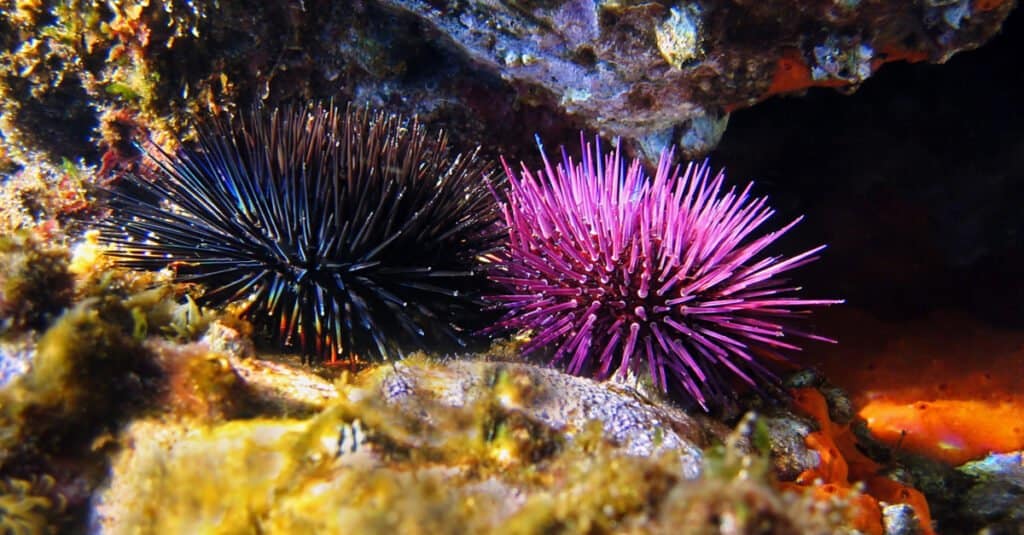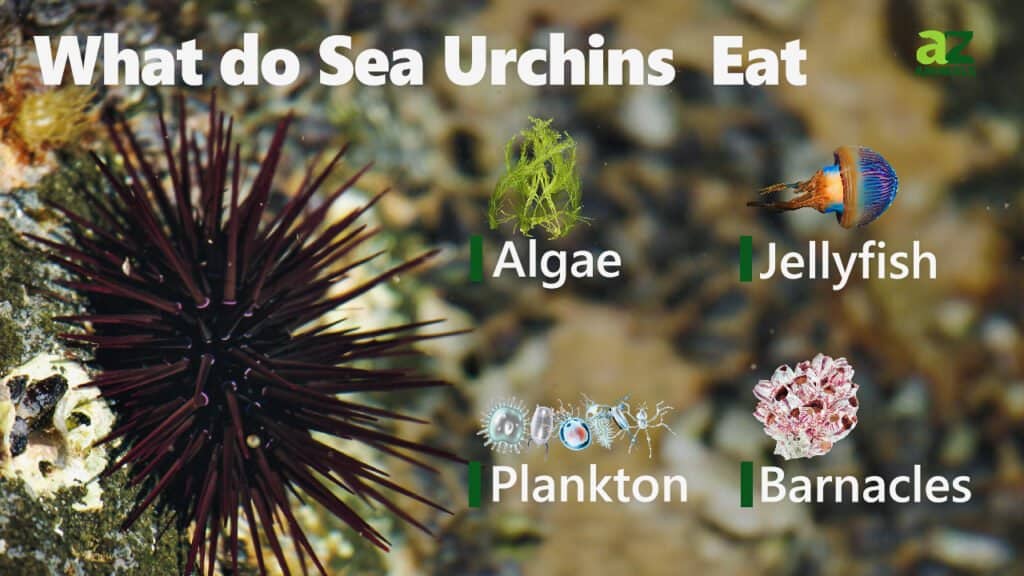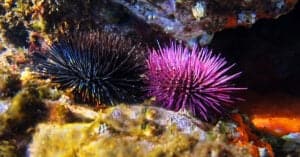The sea urchin is a member of the class Echinoidea and order Echinoida. Found in most of the world’s oceans, the sea urchin has up to 950 different species and is known for its relatively great lifespan which sometimes extends up to 200 years. Even though they live in oceans, sea urchins cannot swim, which is why they inhabit ocean floors. That’s one of several interesting facts about them.
Mere looking at a sea urchin, most people would assume they don’t have teeth. In this article, we’ll be examining the factuality of that assertion while looking into other related details. Shall we?
Do Sea Urchins Have Teeth?

The teeth of sea urchins have been a major element of study and critical research for experts and scientists.
© NatureDiver/Shutterstock.com
Sea urchins are small sea creatures with shells filled with porcupine-like spines. Given their spiny exterior and overall look, it’s pretty difficult to imagine them with functional teeth. Despite all of that, the truth is, sea urchins have teeth. As a matter of fact, their teeth have been a major element of study and critical research for experts and scientists because of their peculiarities.
How Many Teeth Do Sea Urchins Have?

Sea urchins have five teeth.
©Damsea/Shutterstock.com
Sea urchins have teeth, numbering up to five each across all their species. Each of the five teeth is held by a distinct jaw within a circular composition found right at the center of their spherical shells. Their teeth are made of fine crystals of magnesium calcite, which are much tougher than regular pure calcite. Much of this magnesium is concentrated at the tip of each tooth which makes grinding through hard rock a lot more effective.
Do Sea Urchins Bite?
Given their calcitic, polycrystalline teeth, sea urchins are more than capable of biting. While this is a rarity, sea urchins bite and some species even have the ability to inflict venomous bites. Considering the hardness and abrasiveness of their teeth, a sea urchin’s bite definitely hurts badly and can cause severe injuries, which may prove fatal down the line.
Do Sea Urchins Sting?
Sea urchins sting way more than they bite because their bodies are practically covered in calcium-rich spines, designed to ward off predators. However, stubborn predators who go close to them will likely end up with painful spines in their skins.
Also, some sea urchin species have venomous spines which could cause pain alongside potentially fatal effects. An example of a venomous sea urchin is the flower urchin, commonly found in the Pacific and Indian Oceans.
What Do Sea Urchins Eat?

Sea urchins are omnivores that eat algae, sponges, plankton, mussels, kelp, barnacles, moss animals, and fish carcasses, among others. They are opportunistic feeders and mostly eat any edible thing that comes their way.
They have mouths at the bottom of their shells, composed of five teeth, as mentioned earlier. Their mouths can seize and tear, which allows them to feast on a wide range of food sources around the ocean floor. However, they have a special liking for algae and kelp.
Do Sea Urchins Chew?
Sea urchins have five rough and extra calcitic teeth that allow them to chew on their food sources. However, even more fascinating, is the fact that they can chew through stones and rocks. They are able to do this thanks to their magnificent teeth which comprise crystals of magnesium calcite, fixed right at the grinding tips. This makes the teeth incredibly sharp so much so that they can grind through rocks.
Why Do Sea Urchins Chew Through Rocks?
Having examined the sheer phenomenality of the sea urchin’s teeth, we should talk about why sea urchins chew rocks. This is a question that we are sure must have puzzled your mind as you read through this piece and we are more than glad to provide satisfactory answers.
Sea urchins typically live on ocean floors presumably because they lack the ability to swim up. Hence, they have lots of stones and rocks around them, most of which have some algae on them. So, the sea urchins chew on the rocks to grind out algae for their own feeding and nutritional benefits.
Also, sea urchins sometimes chew on rocks so as to drill through the rocks and create hiding holes for themselves. This means they dig into rocks to make a home for themselves away from the danger of lurking predators.
So, contrary to what you may have thought before, sea urchins are not psychopathic creatures that just chew on rocks for the fun of it. When they chew rocks, they are either grinding out food for themselves or making themselves a home, both of which are noble adventures that nature has so graciously equipped them for.
Do Sea Urchins Have Predators?
We mentioned earlier that sea urchins sometimes chew through rocks to make homes for themselves and hide from lurking predators. This suggests that they also have predators who hunt them, as we’ll soon clarify.
Indeed, sea urchins are protected by their spiny and, sometimes, venomous shells which keep a lot of predators away from them. After all, no predator wants to get stung repeatedly while hunting. However, sea urchins have natural predators that have somehow developed the skills necessary to successfully hunt them. A prime example is the wolf eel which has evolved to become one of the sea urchin’s fiercest predators. Others include sea otters, birds, lobsters, crabs, wrasse, and sheepshead fish. Sea urchins are also hunted by humans, especially in Japan as well as other regions where they are considered salty, creamy, and tasty. They also make fine delicacies in China and South Korea.
How Does Sea Urchin Teeth Stay Sharp?
For long, researchers wondered why sea urchin teeth never seem to go blunt despite their constant chewing of rocks, stones, and other rock-hard surfaces. The answer surfaced some time ago when it was discovered that sea urchins have self-sharpening teeth. As they engage in their rock-chewing routines, the teeth naturally wear out, and certain layers break off, making way for new rugged ones. Isn’t that marvelous?
There are hopes that at some point in the future, these marvelous sea urchin teeth will help scientists create mechanical tools that never go blunt.
Up Next:
The photo featured at the top of this post is © NatalieJean/Shutterstock.com
Sources
- MedicalNewsToday, Available here: https://www.medicalnewstoday.com/articles/319360#treatment-of-sea-urchin-stings
- ScienceDirect, Available here: https://www.sciencedirect.com/science/article/pii/S2590238519302693
- Answers in Genesis, Available here: https://answersingenesis.org/aquatic-animals/sea-urchins-the-daily-grind/
Thank you for reading! Have some feedback for us? Contact the AZ Animals editorial team.






